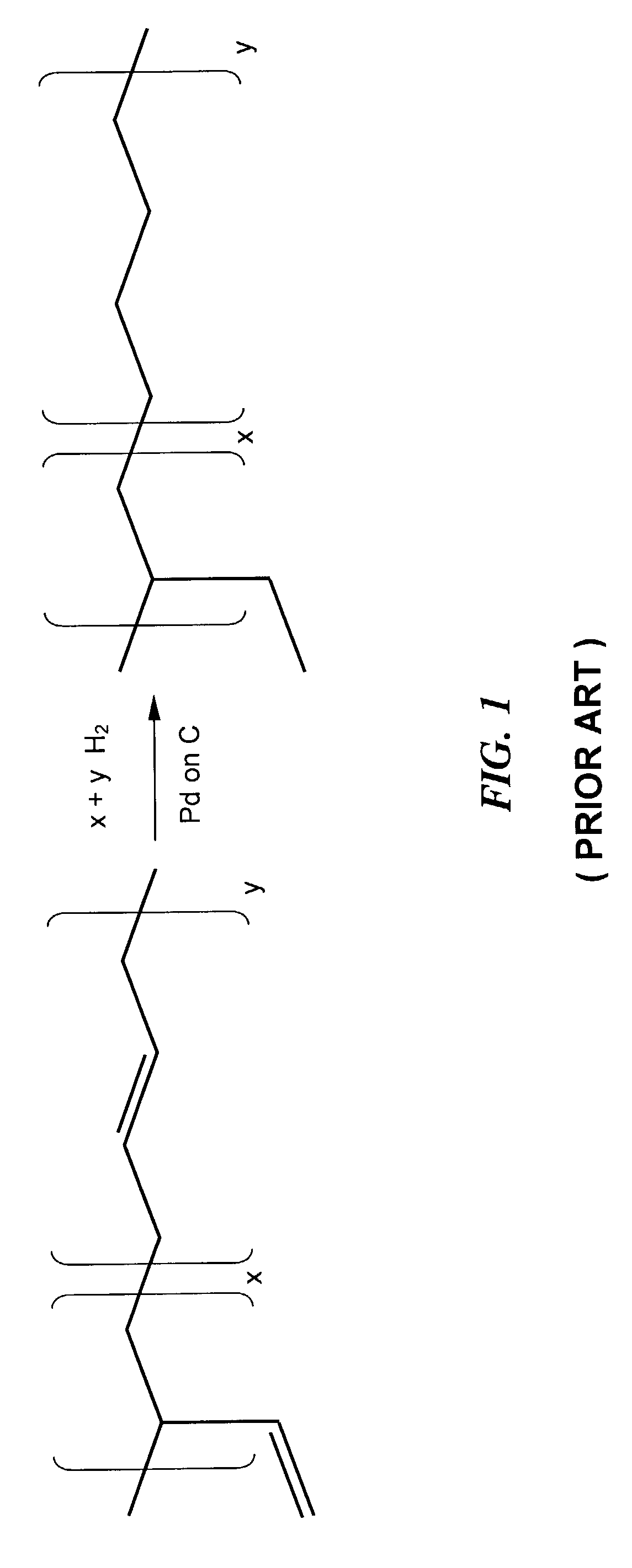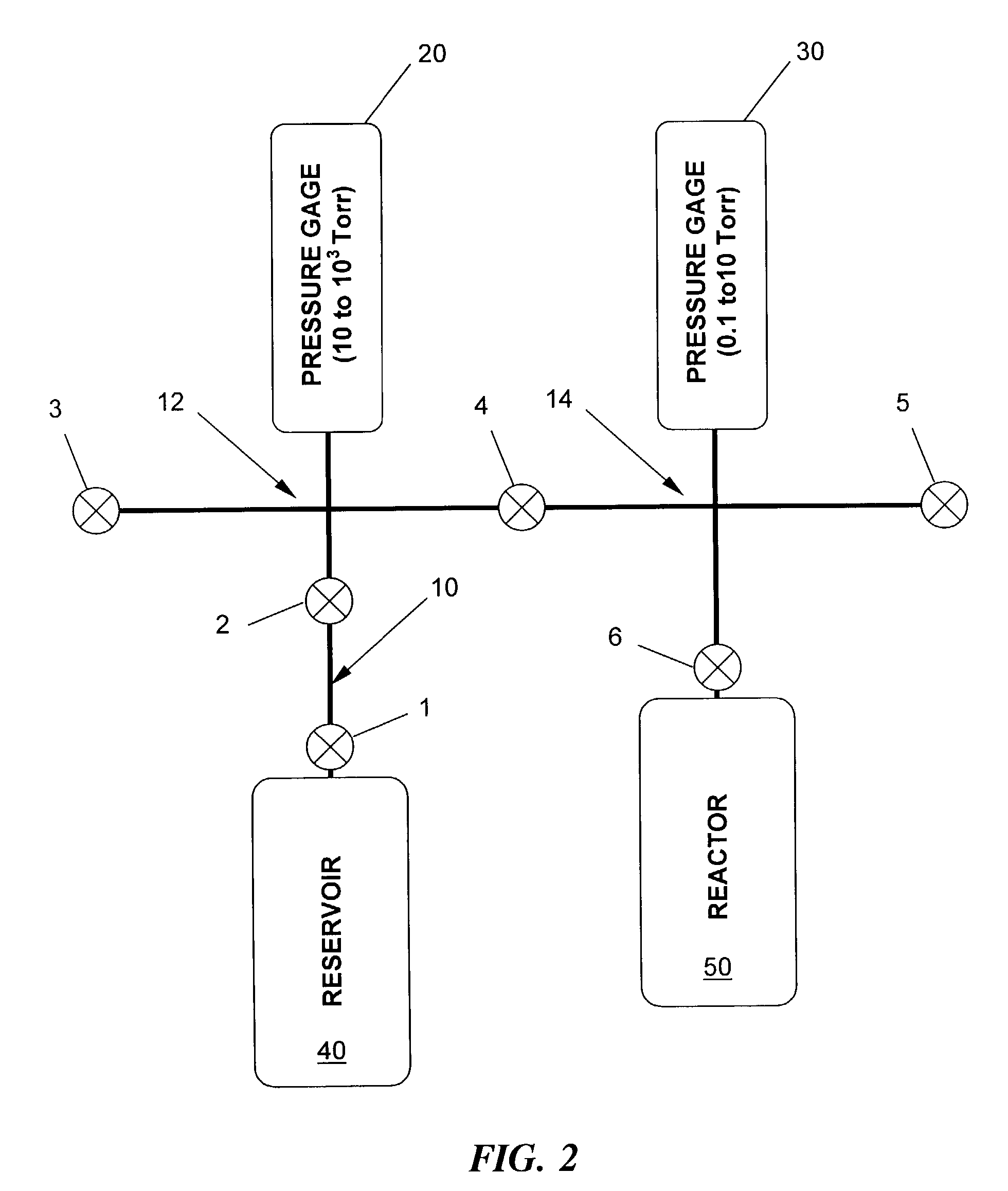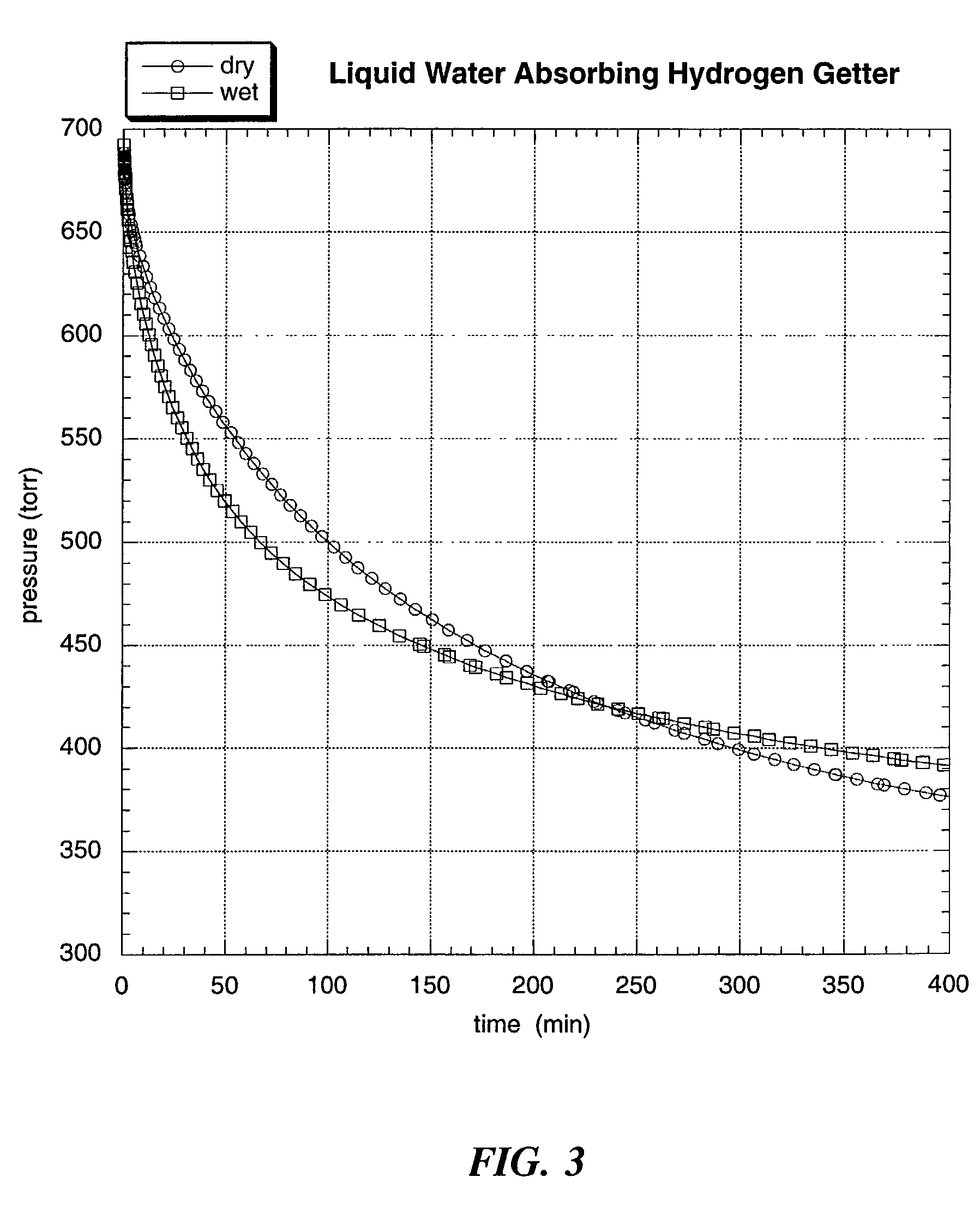Polymer formulation for removing hydrogen and liquid water from an enclosed space
- Summary
- Abstract
- Description
- Claims
- Application Information
AI Technical Summary
Benefits of technology
Problems solved by technology
Method used
Image
Examples
example
[0037]The getter described by this invention is formulated from a blend of polybutadiene and polyacrylate (in this case, sodium polyacrylic acid salt) that is efficiently mixed with a precious metal catalyst and other inert materials. By way of example: about 6.9 grams of a polybutadiene-polyacrylate blend having a weight ratio of about 5:2, was mixed with 1.9 grams of 5% palladium on carbon, and 11.2 grams of inert carbon black.
[0038]Prior to mixing, however, the polyacrylate is processed in order to comminute the granular “as-received” stock material into a fine, talc-like powder. This is done by passing it through a hammer mill, or a high impact particle reduction mill commonly known as an “attritor”, such as those machines manufactured by the Union Process Co. of Akron Ohio. Additionally, the remaining constituents comprising the prior art hydrogen getter composition are also pre-mixed. In particular, the butadiene polymer used in the present invention is classified as a “low” m...
PUM
| Property | Measurement | Unit |
|---|---|---|
| Fraction | aaaaa | aaaaa |
| Percent by mass | aaaaa | aaaaa |
| Percent by mass | aaaaa | aaaaa |
Abstract
Description
Claims
Application Information
 Login to view more
Login to view more - R&D Engineer
- R&D Manager
- IP Professional
- Industry Leading Data Capabilities
- Powerful AI technology
- Patent DNA Extraction
Browse by: Latest US Patents, China's latest patents, Technical Efficacy Thesaurus, Application Domain, Technology Topic.
© 2024 PatSnap. All rights reserved.Legal|Privacy policy|Modern Slavery Act Transparency Statement|Sitemap



